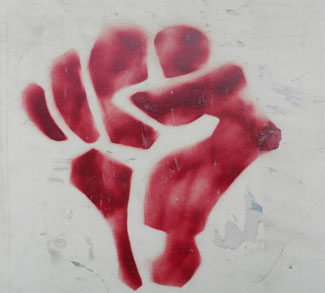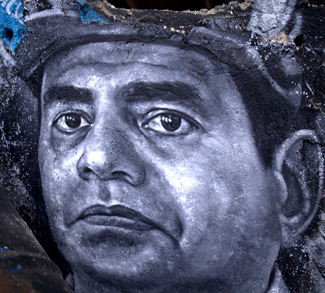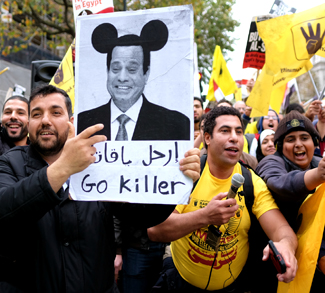In the fractious, conflict-rife Arab world, described for a long time as immune against democratic transformation, revolts have snuck in, toppling some regimes and shaking the thrones of others. Almost three years have passed since the advent of the Arab Spring and statesmen and decision-makers have been trying to analyze these historic transformations in order to establish a foothold in a region that has been looking different, with new dynamics, elites, and a changed political landscape. In our attempt to read the portents, uncover the wellsprings of the Arab Spring, and link it to other incidents and circumstances, we must remember that this pursuit is often in vain, especially given that the available literature is not yet adequate to explain the various aspects of what has previously occurred. Fully aware of this gap, this article aims to reveal these missing contours and dynamics in order to further articulate the term “Arab Spring.” In the same vein, it will attempt to analyze the current political and geopolitical conditions in the Middle East in an effort to draw some relevant conclusions and provide a working prognosis of the future course of events in the region.
It can be said that the events of the current Arab Spring are molded within two composite layers, each with its own features, characteristics, and hypotheses. The first layer operates within a regional setting. Within this framework, the current Arab Spring has proven to have its own characteristics and features requiring further analysis.
Arabs have never had one state that brings together all Arab peoples. However, as they share common history, language, religion and traditions, they have always felt closer to other Arabs than any other particular nation. Tribal links remain evident, and one family can exist in two or three or more Arab states. The identity of contemporary Arab states did not emerge until Sykes–Picot of 1916, which divided the Arab world into separate states, regimes and nationals. In fact, the partitioning of the Ottoman Empire (30 October 1918 – 1 November 1922) was a political event that carried the strategic vision of neutralizing any future threat from the Ottoman Empire and precluding any potential re-rise through partitioning and dividing its huge conglomeration of territories and peoples into several new nations.
In this context, Raymond Hinnebusch points out that imperialism fragmented the region into a multitude of relatively weak and, to a certain extent, artificial states, all at odds with each other. He goes on to say that these relatively weak states, having emerged as Western protectorates against opposition, seeking external patrons and resources for their own survival amid regional power politics, have remained dependent for their security on the Western global powers long after formal independence.
Dreading the prospect of coups or revolutions, the preeminence of security issues over social issues in the Arab area is evidenced by the Stockholm International Peace Research Institute (SIPRI) 2010 figures, which show that Arab states have spent a total of $117.6 billion on military expenditures while about 34.6 million Arabs were living under the two-dollars-a-day international poverty line in 2005, suffering double-digit unemployment rates.
The Arab World: A History of Revolt
It can be argued that the current round of revolts, now termed the “Arab Spring” or “Arab Awakening,” does not constitute the first manifestation of Arab mass protests that have led to a change in the social and political structure of Arab societies. In fact, it comes as the third wave of Arab mass revolts, each possessing its own grounds, circumstances, ideologies, slogans and outcomes.
The first wave of Arab revolts took place in 1914, and was called, “the Great Arab Revolution.” What characterizes this wave is that it had a leader, Sharif Hussein, who led the revolution seeking an end to Ottoman rule in Arabia. This wave coincided with two major events, one global and another regional. World War I was the major global event, while the waning and eventual collapse of the Ottoman Empire (Pax-Ottoman) was the major regional event.
This wave was externally driven, as the revolutions were supported by the British, who were aiming to supplant the Ottoman presence in the region. For all that, the effect of the revolts was ephemeral as they were stripped of their main goal of independence when colonial powers charted their way into the region. During this period, a number of slogans and ideologies were endorsed through this wave and the main slogan was nationalism. This slogan was deemed important in order to encourage Arabs to get rid of any other subordination, mainly Islamism, which inevitably meant severing any connection to the Ottoman Sultan and warding off any yearnings for Ottoman heritage.
The second wave of Arab revolts took place in the 50s and 60s. This wave saw the term “Arab Spring” used for the first time by a French writer. In his book Un Printemps Arabe, published in 1959, Jacques Benoist-Méchin describes the Arab revolts that took place in the “Arab” Middle East, and tries to link them to the European Revolutions of 1848, known as the “Spring of Nations” or “Springtime of the Peoples.” Similar to the first wave, the second wave of Arab revolts came after two major events, one regional and another global. The latter was World War II, which had a great impact on the revolts and caused them to be driven by external factors. In other words, foreign powers and forces encouraged and even stimulated these revolts as Communist powers wanted to fight the Western presence and colonization in the Middle East. For that reason, “fighting imperialism” and “progressivism” were among the other key slogans and themes of this period.
Yet, the major regional event that occurred during that period was the establishment of the State of Israel in the center of the Arab World. This led to the endorsement of an “Arabism” slogan to counter “Zionism,” which attended the establishment of the State of Israel. Arabism was adeptly promoted by late Egyptian President Gamal Abdel Nasser, as his name was largely aligned with the second wave of Arab revolts. In their analyses of this state of affairs, some scholars see that when the great powers were divided (as in the Cold War) and hegemonic intervention was thus deterred, the conditions for regional autonomy improve and the region is more likely to unite against the outside.
Arabism (pan-Arabism or Arab nationalism) struck a widespread chord, inspiring other leaders who in turn steered revolts in other countries in the Middle East. In effect, Arabism gained popularity in the Arab streets, termed at times as “Nassersim,” and had an evident influence on many Arab parties like the Ba’ath parties in Syria and Iraq, Gadhafi in Libya, and others. This wave of revolts did not target Israel, but the “other colonial presence” in the Middle East- deemed to be the real instigator and creator of Zionism and hence the State of Israel. In this regard, a number of crowns, condemned by their alliance or reliance on Western “imperialistic” powers, paid the price and were toppled in Libya, Iraq, and primarily in Egypt.
Arab nationalism, which mainly meant adhering to Arab interests and unity, declined gradually over the course of the past 40 years. For instance, the position of Arab states was united and remarkably solid facing the establishment of the State of Israel in 1948 and opposing the UN partition plan. A similar position was upheld in 1973 in what was known as the “oil crisis,” However, the signed peace agreement between Israel and Egypt (during the reign of late President Sadat) announced the decline of Arab nationalism. A number of Arab states boycotted Egypt and the Arab League headquarters was removed from Cairo. A number of incidents followed which bolstered this fragmentation, including Arabs’ restrained reaction to the Israeli invasion of an Arab capital, Beirut; the Iran-Iraq war which put Syria in the opposite camp with Iraq; and the US strike on another Arab capital, Tripoli, in 1986, which produced only a moderate reaction from Arab regimes.
The Iraqi invasion of Kuwait in 1990 had serious repercussions and it played a direct role in the waning of Arab nationalism, especially since the invasion divided Arabs into two camps, one of which was willing to invite non-Arab armies to attack their fellow Arabs in Iraq. Later, following the US occupation of Iraq in 2003, the death of the staunch advocate of Arab nationalism, Saddam Hussein, signaled the moribund of Arabism.
Regional Politics beyond the Arab Spring
The collapse of the Soviet Union, the fading of Arabism, the toppling of a number of Arab regimes, and the waning of historical Arab leader states all contributed to a power vacuum in the region, making the eventual intervention of foreign powers (either regional or global) inevitable. Traditional super and global powers are still seeking a bigger, newer, role in the Arab World, in response to these changes. The United States, Russia, China and Europe are all competing among each other in order to gain leverage and a establish a wider foothold in the region; at times using their soft power instruments, at others their historical cooperation, though never forgetting the economic incentives. In his article in the Russian Odanko magazine entitled ‘Obama et Poutine vont-ils se partager le Proche-Orient?’ the French writer Thierry Meyssan underscores this hypothesis and suggests a new scenario for the division of the Middle East between the United States and Russia.
Turkey, Iran, and Israel on the other hand are the most favored regional powers with this end in view. However, Israel’s chances hinge greatly on a peace agreement with the Palestinians, not to mention the obvious fact that Israel is culturally different from the rest of the countries in the region. History, culture and religion outweigh Iran’s odds over Israel, as it has also succeeded in building a network of allies within the region. However, Iran does not seem to be an appealing model for many Arab populations, especially when it comes to freedom, human rights, economics and relations with the rest of the world, especially with the West. Turkey, which is part of the culture, history and religious fabric of the region, appears to have the best odds in her favor. It presents an appealing model for its democracy, freedom and modernity, human rights, booming economy and relations with the West, along with the presence of Islamic elites in power. Yet, the term “the Turkish model” has been overplayed and has put Turkey’s popularity on the line. In other words, Turkey’s potential in the Middle East is marred by its explicit zeal and overt use of its soft power, which may lead to untoward effects.
Treading the path into the Middle East should be charted carefully. It is well known for being one of the most volatile regions of the world, and owing to this complexity it is often described as a “quicksand.” At this juncture, it isn’t difficult to fathom the feeling of frustration that permeates nearly every Arab, who believes that their destiny should not hinge on others, but remain in their own hands. Lamentably, this desired outcome will not materialize until historical Arab leader states rise and shake the dust of weakness and reluctance from their shoulders.




